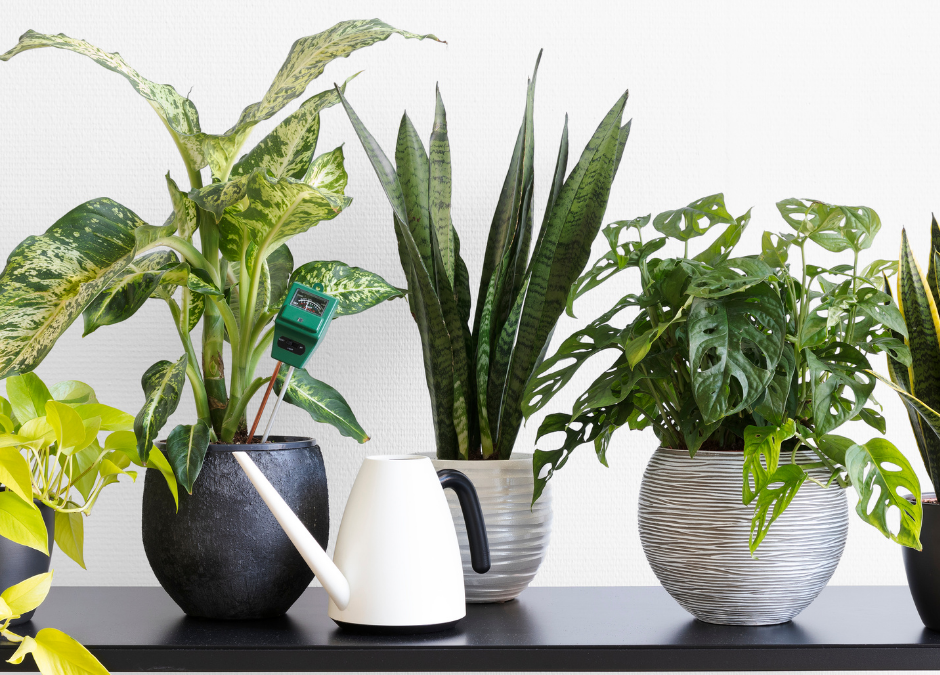Start Spring with Happy Plants.
This time of year, most plants come out of dormancy and begin actively growing again. Now is the best time to prepare your plants for spring and summer and to give them some much-needed attention. Make the most of brighter rays and longer days by following these spring plant care tips to help your plants thrive.
- Water more frequently. More hours of daylight means your plants will probably be thirsting for more water. Springtime is when you should consider increasing watering based on individual plant needs. But, be careful not to overwater your plants. A good rule of thumb is to water when the first two inches of soil feel dry to the touch. Usually, this means watering once or twice a week.
- Move plants away from sunny windows. In the winter, you might have placed your plants closer to the windows to get as much sunlight as possible. Now, with more sunlight, you may need to relocate your plants. Look from your plants’ point of view towards the sun. If it is too bright, move them farther away. Another trick is to place your hand in between the plant and the light source. If it is too hot for you, it is probably too hot for the plant and will result in its leaves burning.
- Peppy plants need pruning. Give your plant a haircut. Remove dead leaves off your plant or any leggy or weak growth. This is a surefire way to ensure your plant uses nutrients efficiently and prevents pests. It also helps to keep the plant looking its best.
- Repot if your plant needs more room. Your plant may need a bigger pot if its roots are coming out of drainage holes at the bottom of the pot. Other signs may simply be a plant that appears too large for the pot, yellowing leaves, wilting, or slowed growth.
- Fertilize, if needed. Fertilizer isn’t necessary for new soil, but slowly incorporating small amounts of fertilizer to existing soil starting in the spring can help plants absorb the nutrients they need to flourish.
- Putting plants back outside. Slowly acclimate your plants to outdoor conditions. Your plants live a cushy existence indoors where they don’t experience as many variations in temperature, humidity, or watering. One good way to help get them acclimated is by opening your windows on nice days to get them used to the outdoor air. Ideal temperatures at night shouldn’t fall below 55 degrees. Check on your plants frequently during this transition.
- Dust your leaves. Rinse under water or use a damp cloth to remove any dust that has settled on your plants’ foliage over the winter. Your plants will surely appreciate this as they will be better able to soak up sunlight.
Plant Care Experts in Louisville, KY
The extra TLC you provide your plant in the spring is worth the effort and will result in beautiful, thriving plants. If you have any questions about plant care, reach out to Anything Groes today. We would be happy to help you achieve a greener space that allows you to focus and relax.






